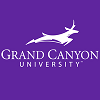

What are the top animation school programs in Arizona for 2025?
| Ranking | School | City |
|---|---|---|
| 1 | Arizona State University | Tempe |
| 2 | University of Advancing Technology | Tempe |
| 3 | Grand Canyon University | Phoenix |
| 4 | Northern Arizona University | Flagstaff |
Our 2025 ranking -our fourteenth annual- of the top animation school programs in Arizona. For an explanation of the ranking criteria, click here.

The Herberger Institute for Design and the Arts at Arizona State University (ASU) was created in 2009 after the ASU College of Design and the Katherine K. Herberger College of Fine Arts merged. Today, Herberger employs more than 600 faculty members that serve nearly 9,000 students enrolled in 130 different programs across the School of Art; the School of Arts, Media and Engineering; the Design School; The Sidney Poitier New American Film School; ASU FIDM; and the School of Music, Dance and Theater. The Herberger Institute also houses the ASU Art Museum.
The School of Art and the School of Arts, Media and Engineering provide several paths to study animation. In the School of Art, students can enroll in the Art BFA with a concentration in Animation; the Art MFA; or the 18 credit-hour Animation minor. School of Arts, Media and Engineering students can enroll in the Digital Culture BA program; the interdisciplinary 21 credit hour undergraduate minor; or the 18 credit-hour Digital Culture certificate.
The Digital Culture BA features a variety of courses that allow students to focus in animation. Examples include Introduction to Computer Animation; Experimental Video Art; 2D Computer Animation; 3D Tools; Stop Motion Animation; Introduction to Animation for Film; Animating Virtual Worlds; 3D Computer Imaging and Animation; Fundamentals of Sound Art; and Motion Graphics and Animation. The program culminates with a final project.
Graduates of the Digital Culture BA program at Arizona State University are prepared to pursue roles in areas such as animation and film, video game development, media arts, computing, and graphic communications.
The Art BFA with a concentration in Animation requires 120 credit hours of study. Courses for the program are led by industry professionals with expertise in animation filmmaking, emerging technology, and computer-generated imagery. Course examples include Animation Motion Studies; The Art Experience; Storyboarding and Narrative Sequencing; 3D Computer Imaging and Animation; Illustration; and Junior Animation Projects I-II.
Elective options for the program allow students to gain experience in other areas such as stop motion animation, visual effects (VFX), experimental video art, game art, and screenwriting.
Other Art BFA/Animation program benefits include access to state-of-the-art facilities and resources at the Media and Immersive eXperience (MIX) Center in Mesa, Arizona; internships with local studios, companies, and arts organizations; visiting artist lectures supported by the School of Art galleries, the Ceramics Research Center and Archive, and the ASU Art Museum; and participation in public exhibitions.
The Art BFA program at Arizona State University culminates with the Animation Capstone completed across two courses. The capstone results in an independent short film or a full-length film produced as a team.
The Art MFA program at ASU Herberger provides the opportunity to complete projects in a discipline of the student’s choice. Examples include animation, intermedia, drawing and painting, photography, and printmaking. Other program benefits include workshops; teaching opportunities; visiting artist lectures; and access to private, state-of-the-art studio space at Grant Street Studios.
Located in downtown Phoenix, Grant Street houses several galleries and resources such as printmaking presses, a computer lab and 3D print lab, and a photography darkroom.
The Art MFA program at Arizona State University culminates in a solo thesis exhibition in Step Gallery, Northlight Gallery, or Harry Wood Gallery. All galleries are part of the School of Art.
Graduates of the Art BFA/Animation and MFA programs at Arizona State University are prepared to pursue careers in the creative, technical, and scientific industries, among others. Examples include animation and film, robotics, medical illustration, scientific and data visualization, games and game development, cinema and television, AR/VR, illustration, and fine arts.
ASU Art and Animation alumni hold titles such as Animator, Creative Director, VFX Artist, Graphic Artist, Art Director, and Multimedia Designer.
Founded on March 12, 1885, Arizona State University is the state’s first higher education institution. The school opened its doors on February 8, 1886 as Territorial Normal School (TNS). On the first day of class, TNS welcomed 33 students to a four-classroom building in Tempe, Arizona. Today, ASU sits on 1,550 acres that house multiple campuses, 16 colleges and schools, and ASU Online. Approximately 152,810 students from across the U.S. and nearly 160 other countries have access to more than 800 degree programs.
Arizona State University is accredited by the Higher Learning Commission (HLC). Engineering at ASU is accredited by the Engineering Accreditation Commission of ABET.

University of Advancing Technology (UAT) is one of the few 100% STEM-based universities in the U.S. The school also follows a Synchronic Learning Model that emphasizes independent and collaborative learning in real-world environments. While UAT programs are provided on-campus, online, or a combination of the two, all students have access to mentors and state-of-the-art production facilities. And whether students study on-campus or online, internships are a graduation requirement.
For animators, University of Advancing Technology has a Game Art and Animation (GAA) BA program that allows students to work in real game production environments with programmers and designers. Consisting of 120 credit hours, the program focuses on immersive courses that teach students how to create 2D/3D art and animation for mobile, virtual reality (VR), PC, online, and console games. Course examples for the program include Introduction to Game Art and Animation; Visual Effects Compositing; Game Art and Animation Fundamentals; Virtual Reality World Building; UI Design and Animation; 3D Modeling Environments and FX; Materials, Shaders and Lighting; 3D Modeling Characters and Vehicles; Storyboarding; VR/AR User Experience Design; and Production Studio.
The UAT GAA BA program also requires completion of the Student Innovation Project courses I-III. Though not required, courses such as Introduction to AI and Analytics, Digital Asset Creation, and Java Programming are highly recommended. In addition to the required internship, students will have opportunities to participate in community projects and apprenticeship experiences.
The Game Art and Animation BA program at University of Advancing Technology culminates with a final project, portfolio, and presentation. Graduates are prepared to pursue positions in all areas of animation and game design. Sample job titles include Animator, Character Animator, Game Artist, Texture Artist, Senior Animator, Storyboard Artist, Art Director, and Environment Animator.
UAT alumni can be found at places such as Sony Entertainment, Gearbox Publishing, FabCom, Amazon, American Gaming Systems, eBay, and GoDaddy.
Founded in 1983 as the CAD Institute, University of Advancing Technology is a private, family-owned institution that serves around 1,000 students from the U.S. and overseas. The school provides nearly 25 degree programs in areas from business and innovation to cybersecurity and virtual reality. Programs lead to the associate, bachelor, or master’s degree. University of Advancing Technology is accredited by the Higher Learning Commission (HLC) and the Council for Higher Education Accreditation (CHEA).

Grand Canyon University (GCU) is home to the College of Arts and Media, which provides 17 degree programs that emphasize studio practice, formal lecture courses, and interactions with accomplished industry professionals. Among the college’s programs is the Digital Design BA with an Animation emphasis. Provided online and on campus, this 120 credit hour program explores storytelling, animation techniques, and the design process.
Courses for the program are delivered in a hands-on learning environment, with opportunities to work on collaborative projects. Course examples include Raster and Vector Technologies; Design Thinking; Layout and Composition; 2D Motion Design 1-2; Production Methods; Effective Communication; 3D Motion Design 1-2; Creative Processes; Advanced Motion Design 1-3; Designing with Type; History of Design; Motion Technologies; Advanced Typography; Interface Design-User Experience; and Advanced Motion Design 1-2.
GCU Digital Design students will also complete the Design Professionalism course, which focuses on personal branding and marketing; teamwork; project management; ethical and legal issues; networking, and the industry landscape. In addition, Digital Design students will complete two portfolio courses designed to help them secure an internship. The final portfolio also prepares students for employment in the industry or to pursue a graduate degree.
Other Digital Design BA features include professional critiques; participation in Design United; travel to Phoenix Design Week; membership in the student design organization GCU Creative Herd; and the GCU student chapter of the American Institute of Graphic Arts (AIGA).
The Digital Design BA program culminates with the Grand Canyon University Senior Showcase. This is the required Capstone for all GCU Digital Design majors.
Graduates of the Digital Design BA at Grand Canyon University are prepared to pursue careers in animation, film, and television; game art and design; advertising and public relations; animation for architecture; scientific animation; forensic animation; medical animation; and art and design education.
Grand Canyon University was chartered in 1949 as Grand Canyon College. This private, Christian university opened with just 100 students and 16 faculty members. Today, GCU serves approximately 125,000 students enrolled in approximately 350 programs provided on campus and online. Roughly half of GCU’s online students study at the graduate level. Grand Canyon University has been accredited by the Higher Learning Commission (HLC) since 1968.

Northern Arizona University (NAU) is home to the College of Social and Behavioral Sciences. Within the college is the School of Communication, which provides immersive programs leading to a BA, BFA, BS or MA. Students in all programs benefit from hands-on projects and coursework that takes place in a state-of-the-art building; professional internships at local and regional studios; multidisciplinary study; collaborative learning; studio classes; and instructors who are accomplished industry professionals.
For students seeking an animation program, the NAU School of Communication has a Visual Communication BFA with an Animation emphasis. In addition to all the School of Communications has to offer, the BFA program provides opportunities to work on real-world projects in the campus-based VisualDESIGNlab and Advanced Media Lab.
Consisting of 120 credit hours (with 70 in the major), the BFA program includes courses such as Introduction to Animation; Drawing Fundamentals; Animation I-III; Communication Design; Animation Studies; Motion Graphics; Animation Studios; and Advanced Transmedia Project. Students may enhance the degree through required electives.
The Visual Communication BFA program at Northern Arizona University culminates with the Animation Senior Reel course. Students will graduate with a professional portfolio of their best work.
Graduates are prepared to pursue careers in fields such as animation, film and television, game design and development, advertising and marketing, simulation, visualization, architecture, research, and education. Program alumni have been hired at major companies and studios such as Amazon Game Studios, Google, Motorola, Netflix, Yahoo!, IBM, Nike, GAP, L’Oreal, W.L. Gore, Citigroup, Teva, and GoDaddy.
In February 2025, the Carnegie Foundation designated Northern Arizona University as a Carnegie R1 institution, which is the highest research classification in the United States. Founded in 1899 as Northern Arizona Normal School (NANS), the school serves approximately 30,000 students from 48 states and 80 countries. Students at NAU have access to more than 400 programs housed across 17 colleges and schools. Northern Arizona University is accredited by The Higher Learning Commission (HLC).
